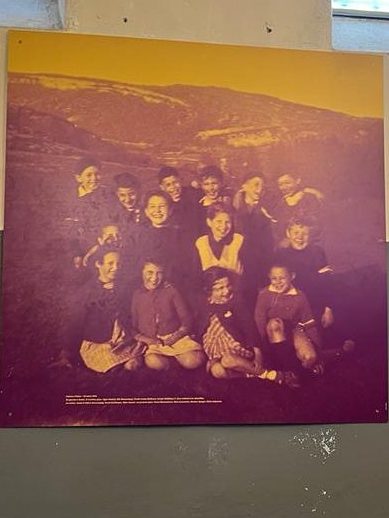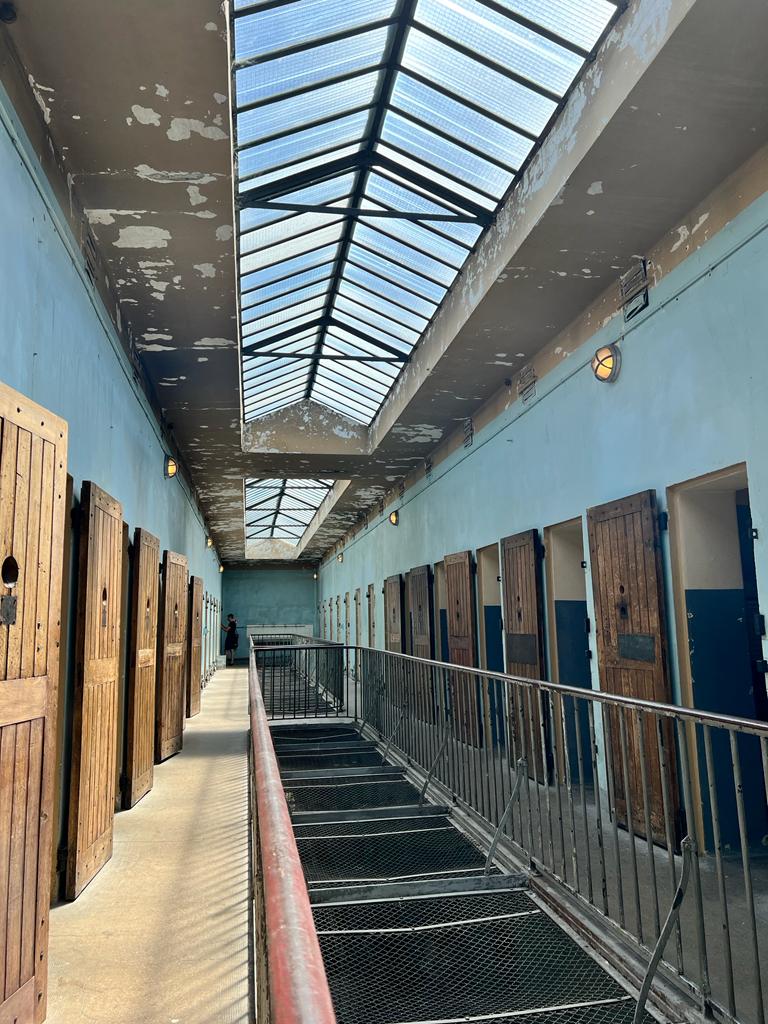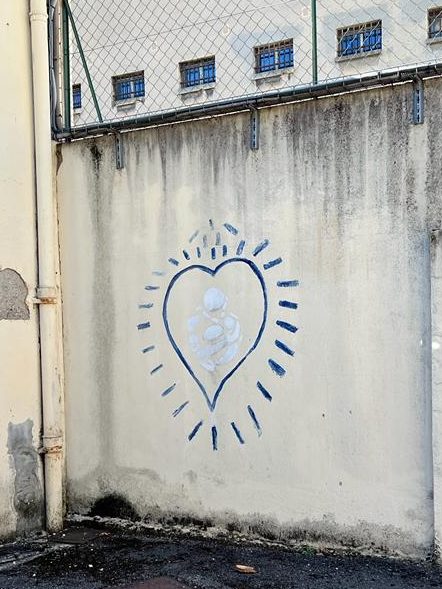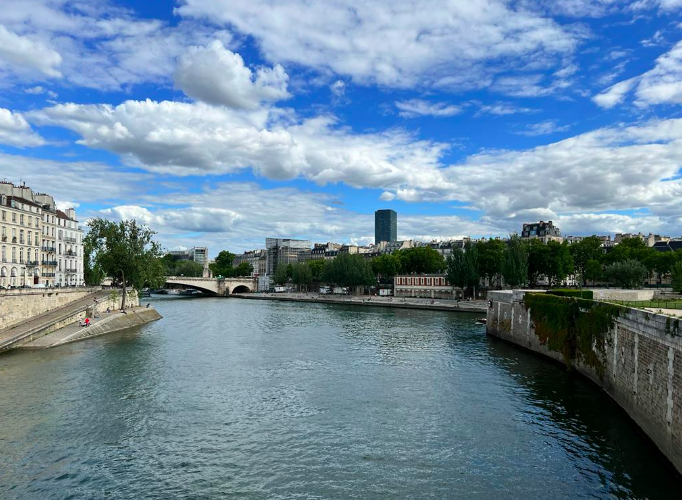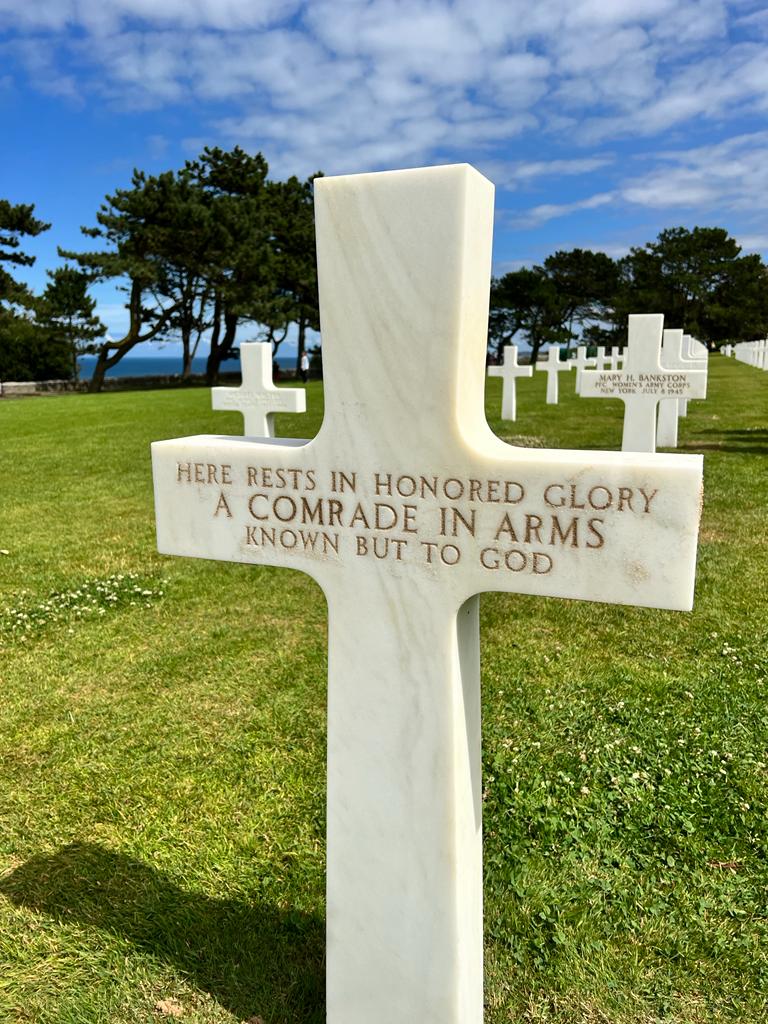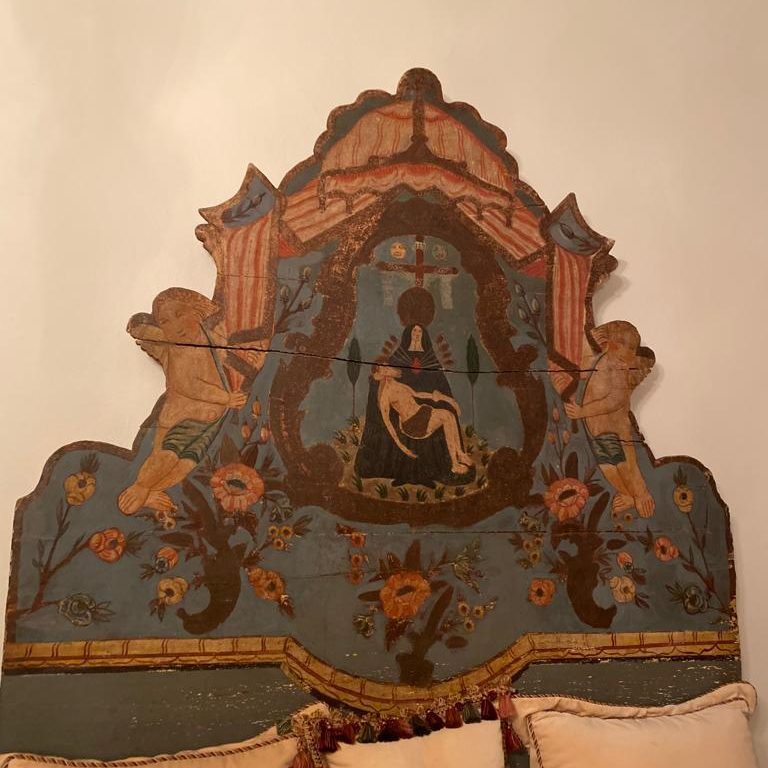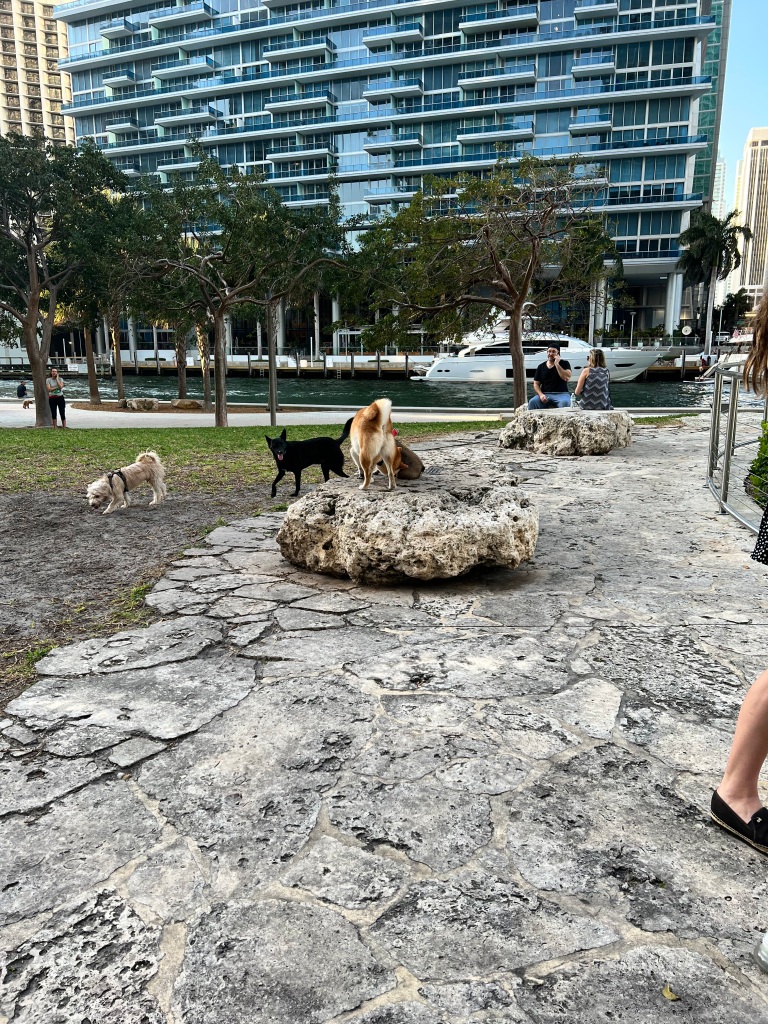You walk down the stairs of the metro to approach your oncoming train. You look at the signs on the wall to help guide you. Is it Port Dauphine or Nation? You make your way down the stairs, hurryingly. Beep, beep, beep. Hurry up! You jump on the train as soon as the doors close. You sigh in relief as you find a seat on the metro.
Bienvenue to Line 2

1. Barbes- Rochechouart
As soon as you get off on Barbes- Rochechouart you’re greeted with an African and middle eastern neighborhood. It is apparent that is it of lower economic status. The neighborhood is right next to tourism however. What shocks you most is the staggering contrast once you go up the hill and turn left. You’re met with tourism at the turn of a corner. You were just in an African and middle eastern neighborhood. There are lots of businesses and graffiti. The streets are flooded with culture. People are talking, hanging out, working, and living. Then, you walk less than 2 kilometers and you’re introduced to instant tourism. Chic cafes greet you everywhere you go. Pretty flowers surround every corner and the demographic changes. Now you see mostly white people, maybe American or European, and the energy is different. It’s no longer an urban feel but a leisurely stroll. You begin to hear different languages and instead of graffiti, portraits align the cobblestone roads.
But this is the reality:
France colonialism. France owned Morocco, Lebanon and other Middle Eastern colonies. The people immigrate to Paris to work and obtain a higher quality of life since life is very disrupted in their home countries.
2. Anvers

Anvers is the stop where Sacre Coeur (sacred heart) is. Sacre Coeur is a catholic church that signifies the sacred heart of Jesus. It is in Montmatre, or the mountain of martyrs, which is where Saint Denis was beheaded next to a Roman temple and two other men were beheaded next to him. Montmatre today is surrounded by tourism and is famously known. It wasn’t always important though; it becomes important when Christians feel threatened by Vikings in the year 1000.
Sacre Coeur is made of white stone and is known as a party town. The Commune of 1870- ideal communist state created fights here. It was the center of socialist uprisings that rejected the church. France declares war on Prussia. Paris forms it’s own government. The Prussian and French government take them down and there is public execution. Also, during this time we have the birth of Impressionism, which is accessible to everyone and is printed in small pictures for everyone to have.
The church, Sacre Coeur, was built to establish their power. The church was built to pay for the sins of previous French people, and is paid for by the French government. Here we see the Pendulum shifting again. Amidst everything that happened here, so did the round up of Jews.
In the 20th century there is an explosion of artists and music.
The Deerings were included as well.
Black musicians could play in downtown Paris but could not stay. They had to go to Montmatre to play the authentic show and stay here.
There was segregation although France was more liberal than The United States.
There is always someone officially praying for us to be saved from our sins at the church.
Back then, they wanted this church to be medieval style in order impose their power, as they were trying to reinsert medieval Christianity.
In the church Catholicism was established. The statue of Peter, the disciple can be found in the church. According to popular legend, Peter means rock or piedra, and he is the rock that Jesus will build the kingdom of heaven on while on earth.
Peter is the representation of God on earth and you have to obey him, according to the story. Christ is available to everyone.
During WW2, there was allied bombing and the bombs hit Montmartre.
No one dies and the church is not hit, however the stained glass is blown out.
The crusades are celebrated after WW2.
Ultimately, there are always two sides to everything. It’s all about perspective, and love is essential as motivation for art.
3. Blanche
Get off at Blanche and you can see the famous Moulin Rouge along with a strip of shops. Common to today’s liberal culture, the shops are sex shops and other clubs. The irony falls in place as blanche means white, which is a pure color, yet the area is filled with impurities. However, just like in Barbes-Rochechouart you turn the street and you’re in a chic touristic spot again. It is resemblance of contradictions and how good lives with evil, similar to this world we live in.
Shortly, as we walked down the street we were met with Josephine Baker’s nightclub. Being the most recognized performer in all of Europe in 1939, Josephine experienced segregation and later became apart of the French resistance. Close to Blanche, Josephine Baker was an independent woman who opened her own nightclub.
4. Stalingrad

You hop on the metro again and make your way to Stalingrad, in which you encounter a circular building, that building is Place de La Bataille de Stalingrad. You curiously notice people eating around that building and lighthearted music playing, shouldn’t a building of great importance be highlighted differently? ,” You ask yourself. However, you quickly come to realize that the monument to the battle of Stalingrad is simply just named that way after the battle, it is actually a bar/restaurant! It is located between the Canal de l’Ourcq and the Canal Saint Martin. It was officially inaugurated on July 7th 1945 and it was named after the battle of Stalingrad, which occurred on July 17th, 1942, between the Germans and the Russians during World War II. The battle is believed to be significant in how it weakened German forces and caused the eventual decline and defeat of Hitler.
Amidst the history that the building represents, the area is one of leisure. The irony comes into play when you realize that there’s a building that many pass everyday, yet are unaware of it symbolic importance. It’s funny how we live amongst history yet many of us aren’t aware of what’s right under our noses.
5. Charles de Gaulle-Etoile

Moving from a more tranquil area to a more upscale area, you find yourself getting off at Charles de Gaulle-Etoile. Once you get off you are greeted with the famous monument to Napolean, the Arc de triomphe and the shopping district known as the Champs- Elysees.
Napoleon built the arc de triumph as a victory arch to celebrate all his victories in combat. Prior, however, Louis XIV created a road in front of the arc of triumph. The arc can be recognized as having a neoclassical art style as it was done in the early 1800s. Named on top of the arc are napoleons victories and on each façade you see scenes of battle and triumph. The arc didn’t always have an easy past though; it took 30 years to build due to political matters. Interestingly, in 1492 Jews and Muslims expelled from Spain and in 1808, when Napoleon was in charge, they were allowed to come back when Napoleon conquered Spain.
Walk down and you’ll find yourself in the Champs-Elysees, a bustling shopping avenue filled anything from high-end stores to McDonald’s. It is a very known touristic spot with many stores and a lot of diversity. It was created on a hill that way as you shop you naturally move down the hill. Fun facts about the Champs-Elysees include Louis Vuitton who invented the travel luggage and Thomas Jefferson, the third president of the United States, who was a slave owner and had a romantic relationship with a slave; he also lived in Paris.
For me, walking down the Champs-Elysees created a feeling of liberation, as it embodies the pinnacle of capitalism with all the stores lined up. Being born in Havana, Cuba where walking down a boulevard of high-end shops and businesses is not possible, I felt very grateful to be standing there as I was reminded of the sacrifice my parents made to give us a better life; and here I was, on France study abroad standing the midst of their sacrifice.
6. Pere Lachaise

The cemetery Pere Lachaise is filled with many deceased people, some notable figures, such as Chopin, Wilde and Delacroix. The history of Pere Lachaise begins with Napolean who does the catacombs of Paris and Pere Lachaise as a fundraiser and because there wasn’t space to put the bodies. In Pere Lachaise, you are able to have a cultural connection and connect to the human side of these figures since most of them perished naturally, rather than a sacrificial death. Being amongst the dead gives the cemetery a heavy feeling to it, as cemeteries always have. It’s the dead amongst the living. There are artistic sculptures for some of the graves, which tells their story, for instance there was one remembering the lives lost in Auschwitz. There is also a lot of cultural diversity in that cemetery and people of different time periods buried there.
My presentation was on Marcel Proust, one of the most important French novelist’s of the 20th century. Presenting his life made me aware and conscious of the small moments, like he says, which are the ones that count. It also gave me a feeling of connection with the late author, as I was able to learn and share his life with my classmates.
Walking through the cemetery is like waking through a city, it is huge with hills and stairs. At the top you see the view of the city and you’re reminded of being alive. Looking up at the trees and sky amongst the gravestones was a stark contrast that made me feel grateful to be alive. It served as an ever-present reminder to focus on the living.
7. Jaures

Get off on the stop Jaures to experience a different cultural environment and two bodies of water, the Canal Saint-Martin and the Bassin de la Villette. Surrounded by an urban area, you see a lot of graffiti and people of African or Middle-Eastern origin.
The Canal Saint-Martin is 4.5 kilometers long and is surrounded by trendy café’s and restaurants. The Bassin de la Villette is also surrounded by the same type of business and by people. People come to sit nearby and enjoy good conversation or fish. You can even see children playing in the fountains on the lake. The Bassin de la Villette is the largest artificial lake in Paris.
Sitting around its edge while overlooking the beautiful view and the boats of love that would pass really made me reflect on how wonderful life is if we choose to look at it that way. Later, I went upstairs to dine overlooking the lake and it was one of those moments that cultivate human connection, moments that we live for.
8. Belleville
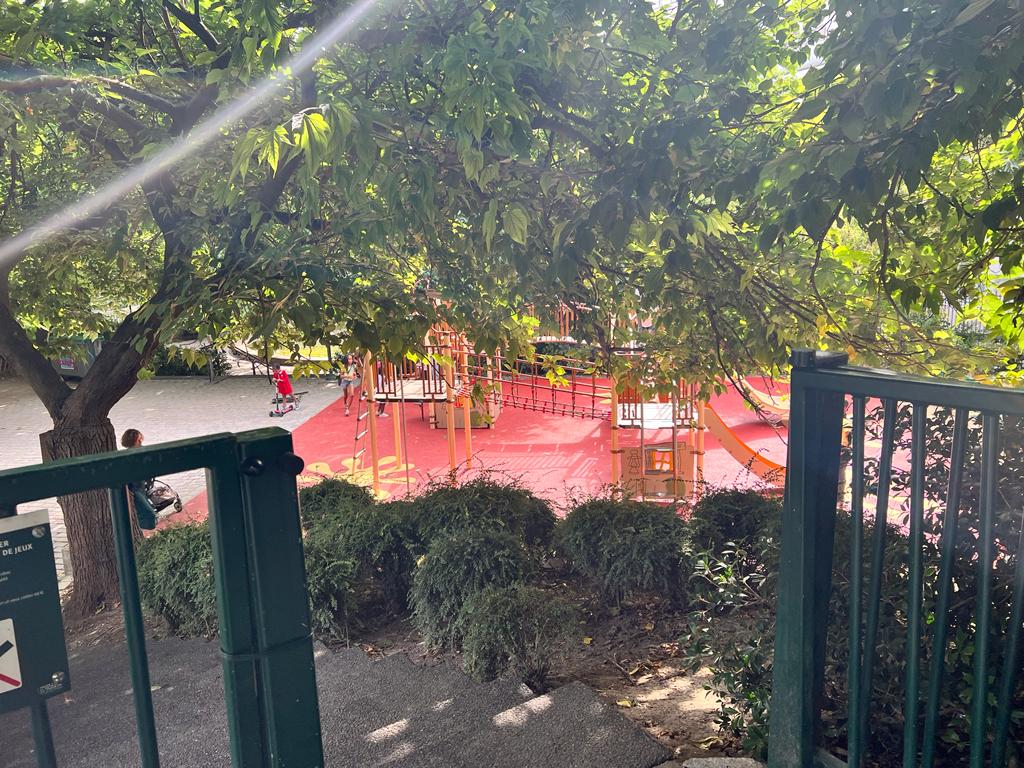
When you get off at Belleville you are met with the park de Belleville. Here you can see kids playing, people talking and the overall calmness of the area. It is a large green space and the highest park in Paris being that it is on a hill 108 meters high.
This park dates back from the Middle Ages where religious communities would settle and farm. Wine was made from the grapes grown here and in the 20th century the cottages that were once nearby turned into modern buildings. Wine is still made here however, as a reminder of the park’s history.
While walking through the park, I felt peace and stillness as I was surrounded by all the greenery. The children playing filled the atmosphere with joy and served as a remembrance of the precious moments that truly matter.
9. La Chapelle

Nearby La Chappelle, you can find Gare du nord: the North Station. Gare du Nord is a large train station in the 10th arrondissement and has international trains as well. The front of the train station is neoclassical and has served in transporting people for years. With the rise of modern industrialization, we can now travel easily from place to place, thereby trading languages, ideas, and customs. The Gare du Nord is useful and I’m sure one day I’ll use it in my travels.
10. Couronnes


As you walk through Couronnes you experience street art on every corner. Walking past one corner however, I noticed an elementary school with a dedicatory plaque. The plaque read, “ In memory of the pupils of this school deported from 1942 to 1944 because they were born Jews, innocent victims of Nazi barbarity with active complicity of the Vichy government. They were exterminated in the death camps. The 13th of May, 2000,” (Google translated). The plaque shocked me and I stayed there standing for a minute. Especially, because this was an elementary school. To recount and remember the horrendous events that happened during WW2 is a responsibility that we must never let slip and the culmination of this class. Throughout all we’ve learned about the holocaust, we must never forget that innocent children were unfortunately pulled into this and that history has a tendency to repeat itself, which is why we must never let it happen again.
References:
https://en.parisinfo.com/transport/73398/Gare-du-Nord
https://www.paris-walking-tours.com/parcdebelleville.html
https://en.parisinfo.com/paris-museum-monument/71943/Bassin-de-La-Villette
https://www.parisinsidersguide.com/canal-saint-martin-paris.html
https://www.eutouring.com/place_de_la_bataille_de_stalingrad_square.html
Professor John W. Bailly’s Lectures

